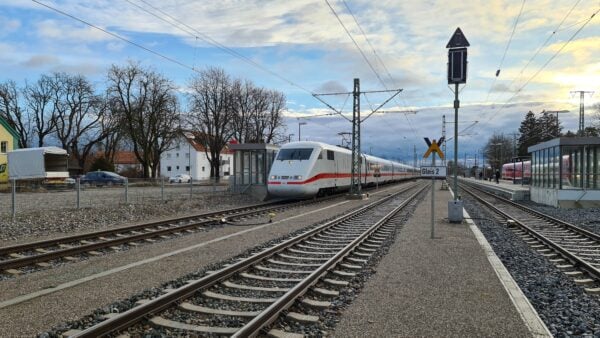Verification and Validation (V&V)
The development of safety-critical systems in rail transport requires a careful and precise approach to verification and validation activities (V&V). In this context, Enotrac offers comprehensive services that focus on planning, managing and providing comprehensive support for V&V activities.
The complexity of these development processes requires well-thought-out planning and precise execution. Enotrac’s experts ensure that every aspect of V&V, from planning to final reporting, meets the highest standards. In this context, Enotrac acts not only as a service provider, but also as a reliable partner that responds to the specific requirements of safety-critical systems in rail transport.
Verification and validation in context
Validation and verification are an essential part of the RAMS concept (Reliability, Availability, Maintainability, Safety). RAMS is a framework concept that aims to ensure the reliability, availability, maintainability and safety of systems.
Verification
Verification in the context of RAMS refers to the process of verifying that a system or component meets the specified requirements. This includes conducting tests and analyses to ensure that the system meets the specified performance parameters, reliability targets and other requirements.
Validation
Validation in the context of RAMS refers to the confirmation that the system or component is suitable for a specific environment or for a specific intended application. This process ensures that the system can achieve the intended operational objectives and meets safety standards.
Both processes, verification and validation, are crucial to ensure that a system is not only reliable and safe, but also meets the specified availability and maintenance targets. RAMS thus ensures that a system performs as required and meets safety and reliability requirements.
Differences and importance in product development
Verification and validation are crucial to the rail product development process. These two testing procedures, though closely related, are distinct.
Verification is a testing procedure that aims to ensure that a system or product conforms to specified requirements. This process involves objectively checking that the resulting product meets the criteria set out in the specifications. In rail product development, verification involves tests and analyses that aim to ensure that the system meets the specified performance parameters, reliability targets and other requirements. By contrast, validation refers to the verification of usage objectives for a system or product. This process objectively confirms that the developed system is suitable for a specific environment or intended application. In rail product development, validation ensures that the system can achieve the intended usage goals and meets safety standards.
The two processes are closely related and cannot always be clearly distinguished. Organisations typically perform verification first, followed by validation, with testing conducted on a sample basis.
Long-term benefits of verification and validation
Successful implementation of verification and validation during product development offers long-term advantages. Identifying and resolving problems at an early stage results in long-term cost savings. Careful testing during development minimises the risk of expensive recalls. A smooth verification and validation process helps to ensure that products are launched on time. Iterative testing improves product quality, which in turn strengthens competitiveness in the market.
Challenges in rail
As rail projects become more complex, ensuring overall safety and compliance with international standards for performance, reliability and functionality becomes more challenging. This requires interdisciplinary expertise and knowledge of technical and operational safety as well as best practices in rail.
Independent Verification and Validation (IV&V) in rail:
Independent Verification and Validation (IV&V) is a structured process that reviews the entire rail project throughout its lifecycle. The aim is to ensure that all specified requirements and standards for safety, RAM (Reliability, Availability, Maintainability), functionality and quality are met. This process ensures that the design is properly validated and verified and meets the project requirements. In this way, IV&V ensures that the highest standards are met in safety-critical rail transport projects.
V&V process at a glance
In all phases of the verification and validation (V&V) process in rail transport, Enotrac acts as a reliable partner, contributing to ensuring the highest quality standards through expertise and commitment. The V&V process involves several important steps, with Enotrac providing support in the areas of planning and management.
Role as verifier or validator according to CENELEC standards
Enotrac takes on the challenging role of verifier or validator according to the relevant CENELEC standards, including EN 50126, EN 50128, EN 50657 and EN 50129, which form the basis for safety and quality requirements in rail transport. The precise implementation of these standards ensures that Enotrac’s verification and validation activities are carried out in accordance with internationally recognised standards.
Support with submission to independent experts and approval procedures
Enotrac offers active support with the submission of verification and validation results to independent experts. This cooperation extends throughout the entire approval process and includes the confident handling of expert opinions. Enotrac’s experts use their extensive experience to ensure successful approval and overcome possible hurdles in the review process.
Customer support and training: Competent support and knowledge transfer
Recognising the importance of providing expert support to clients who wish to take on the role of verifier or validator themselves, Enotrac provides tailored training courses. These courses not only provide a basic understanding of the principles of verification and validation, but also the specific expertise needed to successfully implement verification and validation activities.
Integration of V&V aspects into the daily workflow
Through the training courses, Enotrac enables customers to integrate all aspects of verification and validation, as well as the verifier or validator role, into their daily workflow. This integrative approach ensures that verification and validation are not perceived in isolation, but are an integral part of the entire rail development process.
With our comprehensive support and training, we not only ensure that the verification and validation process meets the highest standards, but also that it is seamlessly integrated into the customer’s workflows. In this way, we contribute to safety and quality in safety-critical rail projects.
Project examples
Enotrac has proven its capabilities in validation and verification in numerous projects.
Knorr-Bremse SfS / New generation electronic platform for brake control
The proven ESRA (Electronic System for Railway Applications) system from Knorr-Bremse is undergoing further development with the creation of a new generation of electronic platforms. Knorr-Bremse is a leading global manufacturer of braking systems for rail and commercial vehicles. Enotrac has been supporting Knorr-Bremse SfS in various projects since 2012, particularly in safety management and the safety analysis of hardware and software. The collaboration covers the verification and validation of the documents for the Generic Safety Case according to the CENELEC RAMS standards EN 50128 and EN 50129.
Electrification of the overall system ABS 48 – Preparation of the CSM documents
The electrification of the Deutsche Bahn’s Section 48, extending from Geltendorf to Lindau-Reutin, is an important project in international rail traffic. Enotrac was commissioned to prepare the CSM documentation at the overall system integration level. This included the creation of the system definition, the hazard log and the system description. Enotrac analysed and technically reviewed the Deutsche Bahn’s specification and verification documents in accordance with the EN 50562 standard. Enotrac successfully coordinated between various project participants, including DB Netz, DB Energie, AsBo and EBA.
Safety mandate for the extension of the Lausanne metro
The safety mandate for the extension of the Lausanne metro includes the development of the new m3 metro line between Lausanne station and Blécherette. The m3 line is part of the improvement in local public transport services, and Enotrac, as leader of the ESm3 consortium, is responsible for the overall safety of the development of the m2 and m3 metro lines in Lausanne. Enotrac provides services such as the definition of methods and the management of overall safety, coordination and testing of the safety activities of all subcontractors, as well as support for testing and phased commissioning.
In the projects outlined above, our Enotrac expert teams have impressively demonstrated their competence and expertise in the verification and validation of safety-critical systems in rail transport. Successful cooperation with renowned companies such as Knorr-Bremse and involvement in major projects such as the electrification of the entire ABS 48 system and the expansion of the Lausanne metro demonstrate Enotrac’s ability to successfully meet complex challenges in the field of V&V activities. By precisely implementing internationally recognised standards, providing support with approval procedures, expert training and integrating V&V aspects into the customer’s workflow, Enotrac ensures the highest safety and quality standards, as well as seamlessly integrating the V&V process into the entire development process in the rail transport sector.
Conclusion
With Enotrac at their side for verification and validation in rail transport, companies receive reliable support and the certainty that their safety-critical projects meet the highest standards. Enotrac demonstrates its comprehensive expertise both by precisely implementing the CENELEC standards and taking on demanding verification and validation roles, as well as by actively supporting the approval process.
Enotrac training courses enable our customers to acquire the necessary knowledge and integrate it seamlessly into their daily workflows. The integration of V&V aspects into day-to-day work not only ensures the highest standards, but also promotes maximum safety and quality in every phase of product development.
Enotrac has proven its capabilities in numerous projects, such as the further development of the electronic platform for brake control systems at Knorr-Bremse and the electrification of the entire ABS 48 system for Deutsche Bahn. Companies can therefore rely on Enotrac not only as a service provider, but also as a partner that ensures that the V&V process is both a fulfilment of standards and an integral part of every rail transport project.








